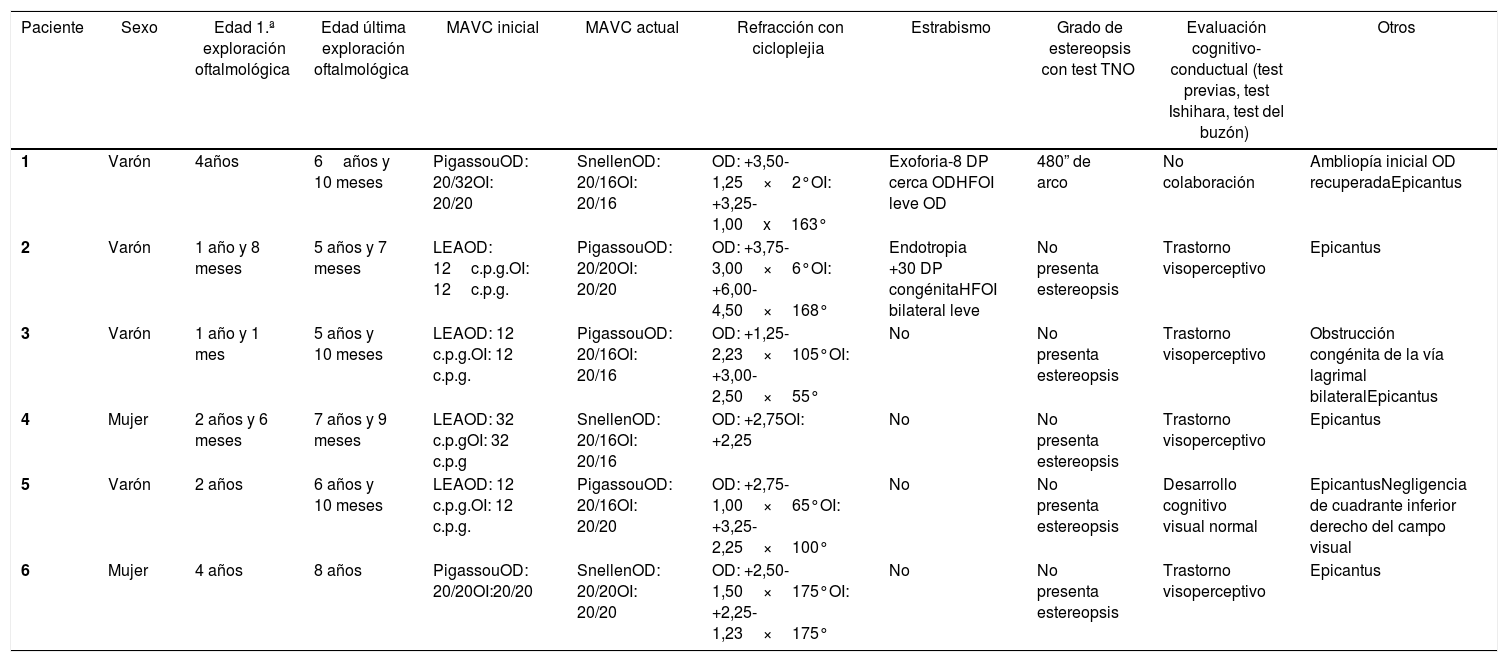Se revisó la historia clínica de 6 pacientes diagnosticados de síndrome de Williams-Beuren en la edad pediátrica.
Todos los pacientes presentaron la facies de elfo característica y anomalías cardiovasculares. Todos presentaron buena agudeza visual, excepto un caso de ambliopía unilateral. El error refractivo más frecuente fue la hipermetropía (n=6; 100%) y el astigmatismo (n=5; 83,3%). En 2 pacientes se encontraron alteraciones de la motilidad ocular (un caso de exoforia con hiperfunción de oblicuo inferior derecho y otro de endotropía congénita con hiperfunción del oblicuo inferior bilateral). Cognitivamente un 66,7% (n=4) tenía alteraciones visoperceptivas. Otros hallazgos fueron epicantus (n=6; 100%) y obstrucción congénita del conducto nasolagrimal con epífora unilateral (n=1; 16,7%).
El síndrome de Williams-Beuren es un trastorno poco frecuente con manifestaciones oftalmológicas y sistémicas complejas. Por ello, es recomendable realizar un seguimiento oftalmológico a estos niños.
Medical history of 6 patients diagnosed with Williams-Beuren Syndrome (SWB) in pediatric age was revised.
All the patients presented characteristic elf facies and cardiovascular abnormalities. All presented good visual acuity, except one case of unilateral amblyopia. The most frequent refractive error was hyperopia (n=6; 100%) and astigmatism (n=5; 83.3%). Ocular motility alterations were found in 2 patients (1 case of exophoria with hyperfunction of right inferior oblique and another of congenital endotropia with bilateral hyperfunction of inferior oblique). On the cognitive function, 66.7% (n=4) had visoperceptive disorders. Other findings were epicanthus (n=6; 100%) and congenital obstruction of the nasolacrimal duct with unilateral epiphora (n=1; 16.7%).
SWB is a rare disorder with complex ophthalmological and systemic manifestations. For this reason, ophthalmological follow-up of these children is recommended.







